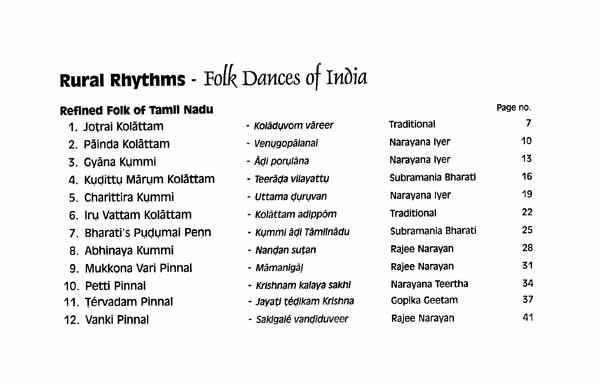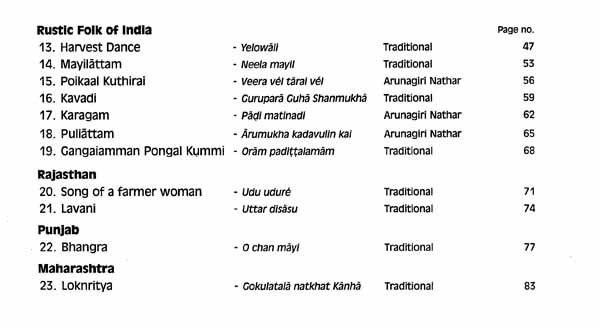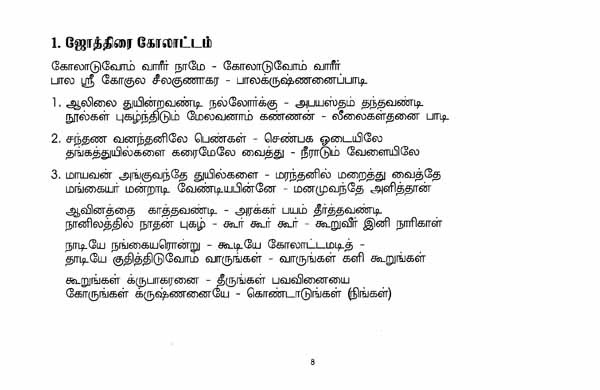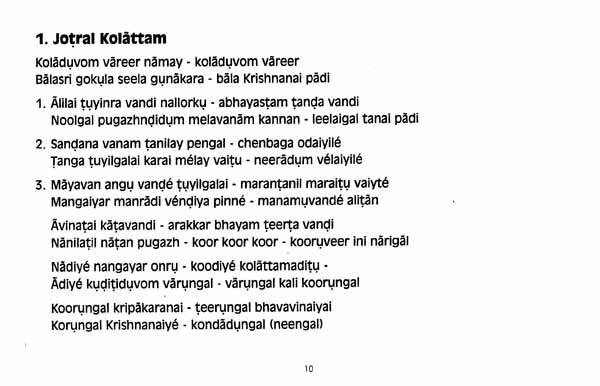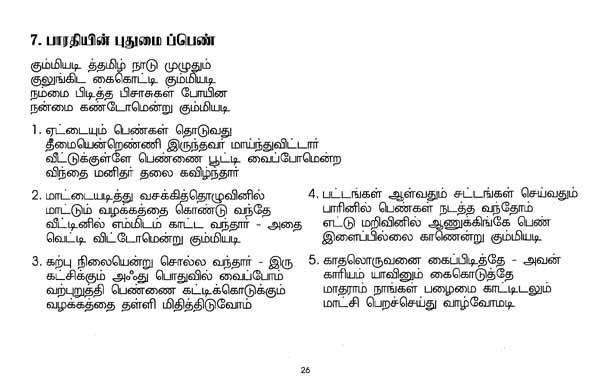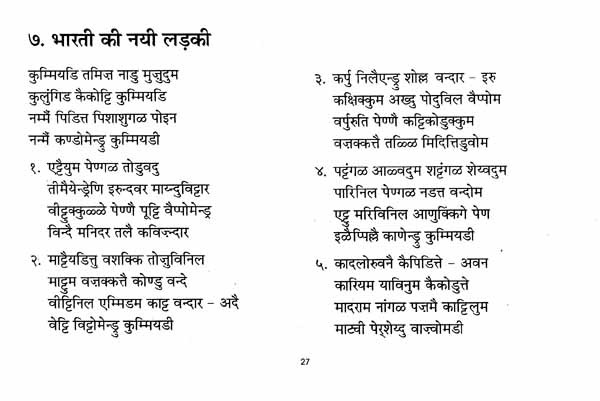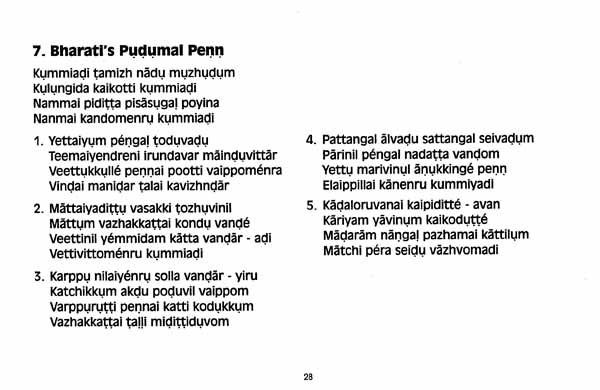
Rural Rhythms- Folk Dances of India
Book Specification
| Item Code: | NBZ051 |
| Author: | Rajee Narayan |
| Publisher: | Rajee Narayan |
| Language: | Tamil Text with Hindi and English Transliteration |
| Edition: | 2005 |
| Pages: | 86 |
| Cover: | PAPERBACK |
| Other Details | 5.50 X 8.50 inch |
| Weight | 160 gm |
Book Description
Since time immemorial, rustic folk songs and dances have played an important role in the villages of India. Almost every Indian state has its share of folk songs and dances, each distinctly different from the other. Changing lifestyles and social rituals are woven into the lyrics.
Kolatta Jothrai, refined folk songs and dances of South India, are still very popular. A quaint story precedes this dance form. It is believed that young girls, who prayed to Lord Siva and his wife, Parvati to bless them with a happy married life, first sought to pray to the divine bull, Nandi, their vehicle, to put in a good word on their behalf. They prayed to Lord Krishna, the brother of Parvati, so that he may influence his sister to bless the young devotees and grant them their wishes. This elaborate ritual is called Basava Puja, which starts on Diwali.
The girls ask a Brahmachari boy to make a clay model of Nandi, which is installed in a significant place. Every morning, the girls propitiate the idol with flowers and fruits and dance round it holding coloured sticks called Kolu. The word Kolattam is derived from this word and means 'dance with sticks.' On the sixteenth day after Diwali, the idol is carried in a procession to the nearest pond or river and the Brahmachari is made to immerse the idol. In the procession, the girls dance with their Kolu-s in gay abandon and enjoy themselves.
Over the years, the dances with sticks grew in variety and various forms of the dance came into vogue, like Kummi and Pinnal Kolattam. Pinnal is a plaited rope; many ropes are held together on top, this forms a centre round which the girls dance, holding the other end of the rope. The plait is created along with the rhythmic movements of the dance, which create a pattern and then opened, to music notes and careful dance movements. The ritual turned into a major social event and entire villages participated with great enthusiasm and religious fervour. In the latter part of the last century, the ritual underwent many changes; the holy cow, Gomatha, replaced Nandi during worship.
The rustic folk dances of South India include harvest dances like Pongal Kummi and Oyil Kummi. Other dances like Kavadi, Karagam, Poikaal Kuthirai (dummy horse dance), Mayil Attam (dance of the peacock), Puli Attam (dance of the tiger) are performed even today during festivals, social functions and temple processions. The music is simple; all stanzas follow the same tune and the tempo is brisk and attractive. The lyrics too are simple and colloquial.
Kavadi and Karagam, the favourite procession dances, are offerings to the Mother Goddess, Devi Amman and to Kartikeya, the son of Siva. Kavadi is a dance in which two small pots are tied to a D-shaped, decorated bamboo frame. The pots contain milk and sugar, which are offered to the God in the temple. Usually, a particular tune called Kavadi Chindu or Nondi Chindu is played on the Nadaswaram, a wind instrument. A catchy rhythm is played on the Melam, the percussion instrument. This is called Naiyyaandi Melam, sounds that create an awesome atmosphere.
In the Rajasthani folk dance given in the book, the farmer imagines good times to come, with the arrival of the monsoon and a rich harvest. The farmer woman speaks to her pet crow of the coming good times and the rich yield of the land. She tells the crow that if it announces the arrival of her man bearing happy tidings, she would decorate its beak with gold jewels !
In the folk dance of Punjab, the young Punjabi bride and her friends tease each other, enjoying themselves singing and dancing. In the folk dance of Maharashtra, young gopi-s sing the praises of Lord Krishna, even as they catch Him stealing butter and mock at Him.
In Rural Rhythms, I have attempted to present a collection of popular songs of rural India, in three scripts, Tamil, Devnagri and English Roman to enable more dancers and rasika-s learn and teach these songs. I hope this proves to be an inspiration to all dancers, to keep alive our rich traditions.
**Contents and Sample Pages**
